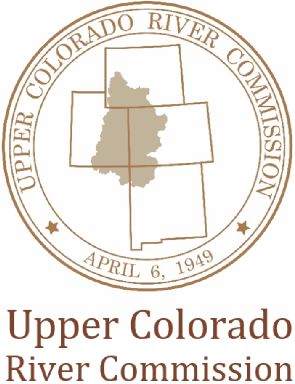Based on a request from Reclamation, and as part of the collaborative process between Reclamation and the Upper Division States to modify CRSS, New Mexico examined all of its demand estimates in the UCRC’s 2016 Depletion Demand Schedule, and their variability as performed in CRSS. New Mexico determined that the only sector that required adjustments was “Exports” related to the San Juan-Chama Project (SJCP). This trans-basin project is supplied from three points of diversion on three streams in southwest Colorado, all of which are tributaries to the San Juan River above Navajo Reservoir. Water is then routed into a series of tunnels crossing the Continental Divide into the Rio Grande Basin in New Mexico. While the points of diversion are operated to maximize diversions as constrained, annual exports fluctuate widely, in part due to annual variation in the hydrology of the catchments above the points of diversion. Based on historical operations and tunnels capacity, New Mexico decided to update the demand for SJCP exports and set it at 175,000 acre-feet per water year. Setting Project demand at a lower amount in CRSS would under-simulate wetter years in which more water is available for diversion. As part of its own review of the CRSS performance, the State of Colorado proposed to revise the CRSS model structure to accurately reflect SCJP operations and to estimate the amount of water available for SJCP exports as a set percentage of the natural flow at Archuleta. New Mexico, in coordination with Colorado, decided to use 11 percent of the annual natural flow at Archuleta to be made available for SJCP exports, since this value best correlates with the historical record. Limiting the amount of water available for diversion in this manner would ensure that CRSS does not over-simulate diversions during dryer years.
